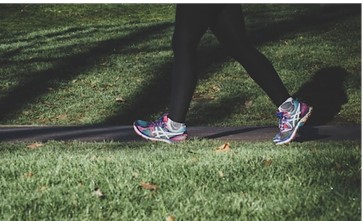How Simply Walking Can Help You Lose Weight
Despite popular belief, it isn’t necessary to exercise in a gym for an hour or two every day in order to lose weight. Thomas Cothren of Maryland says that to safely and effectively lose weight, walking is a great way to start. People of all ages and fitness levels can do it, and the best part is that no equipment is needed!
Walking has numerous health benefits, the primary one being weight loss. The average person can burn an impressive amount of calories at a brisk walking speed. Plus, other benefits include strengthening bones and muscles, improving cardiovascular health, and more.
The following article takes a closer look at the benefits of walking for weight loss as well as general physical and mental health.
How Walking Helps with Weight Loss
Walking, like any aerobic exercise, burns calories. As the speed and steps increase, more calories are burned. The average 180-lb person walking at a brisk pace of 5 miles per hour can approximately burn 738 calories per hour. Even walking at a more reasonable pace of 3.5 miles per hour will burn over 300 calories per hour.
One key characteristic of walking is that it helps maintain lean muscle mass, which is often lost during weight loss regimens, and can help keep off any excess weight.
Tips For Making Walking More Effective
Below are a few ways to improve the weight loss power of walking. To lose weight faster by walking, try these suggestions:
- Wear a weight vest
- Try High-Intensity Interval Training (walk slow, then fast, then slow, then fast, etc.)
- Walk through shallow water for resistance training
- Increase your step count
- Walk at a faster pace
- Try more difficult terrain like hills or uneven ground
- Take multiple short walks per day instead of one long walk
- Focus on tightening the abdominal muscles and glutes while walking
How to Increase the Number of Steps
Sometimes, it can be difficult to find time dedicated to exercising, so here are a few ways everyone can increase the number of steps in their daily routine:
- Take the stairs instead of the elevator whenever possible
- Park further away from doors, such as at work or the supermarket
- Take a short walk during work breaks instead of being sedentary in the break room
- Use a shorter stride to increase the number of steps needed
- Take mini walks while waiting for the microwave, on a phone call, or while brushing teeth
- If possible, buy a treadmill desk to walk on during working hours
- Pace whenever waiting in a line

Overall Health Benefits
There are many positive mental and physical benefits that walking can provide for the entire body.
Mental Benefits
- Increased energy
- Improved mood
- Eased symptoms of anxiety and depression
- Improved memory
- Improved cognition and focus
- Increased social engagement
- Reduced stress
- Improved self-confidence and self-esteem
Physical Benefits
- Improved cardiovascular health
- Improved sleep
- Greater lean muscle mass
- Increased metabolism
- Reduce weight and lose fat
- Lessened symptoms of type two diabetes, high blood pressure, and heart disease
- Improved balance
- Improved muscle endurance
- Increased bone strength
- Strengthened immune system
Final Thoughts
Brisk walking often leads to weight loss, provides improved self-esteem, and even helps in performing basic daily tasks. Many frequent walkers have even reported the urge to start running, and as the weight comes off, running becomes more natural to many, which in turn improves the level of burned calories, physical strength, and increased cardiovascular health.
Try walking today and see where it takes you.


